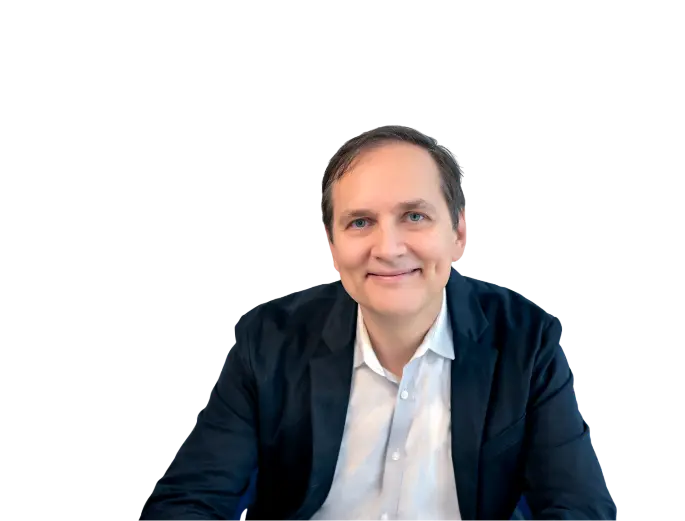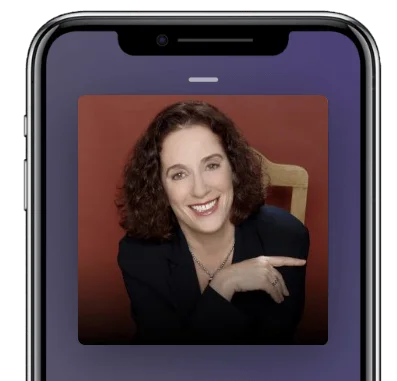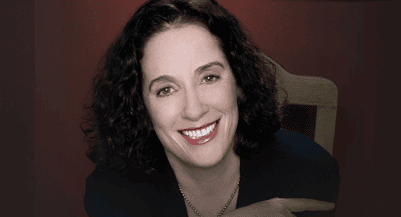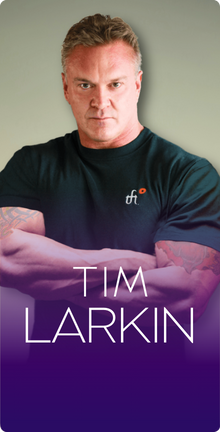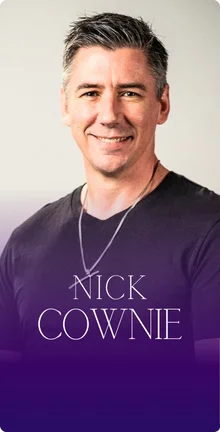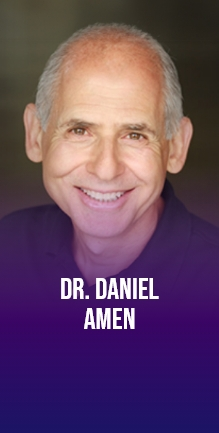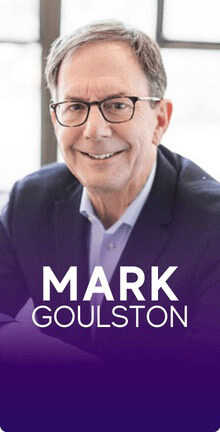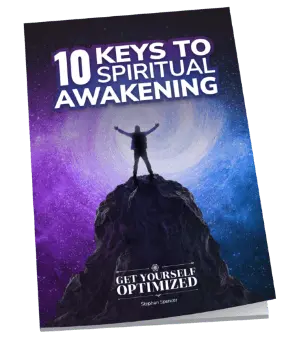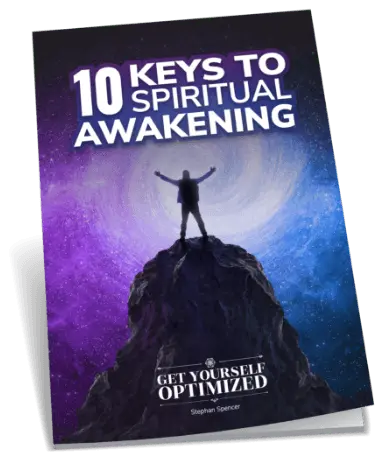In this Episode
- [00:30]Stephan introduces his next guest, Anat Baniel, founder of Anat Baniel Method and NeuroMovement, and author of the bestselling book Move Into Life and Kids Beyond Limits.
- [02:26]Anat shares the synchronicities that brought about NeuroMovement and her Anat Baniel Method
- [12:05]Stephan is curious to know more about the moment when Anat picked up a child who was crying all the time and made her stop crying.
- [16:07]Anat talks about the soul contract, another opportunity to recreate this reality and create something out of nothing.
- [23:27]Stephan shares his learning from a course on How To Multiply Your Baby’s Intelligence and asks Anat’s thoughts about it.
- [35:42]Anat tells about the ways in life that the child can experience the differences and explains that the information system is built on the perception of differences.
- [42:28]Anat communicates that people are built to connect and become one system while connected.
- [46:42]Stephan and Anat both agree about not testing your child at all times, and the evolution is in the parent, from fixing to connecting.
- [55:49]Anat talks about miracles, accountability, and responsibility and gives an example of the approaches she did with a child that has some intelligence but was extremely challenged with abstract thinking.
- [60:38]Stephan asks about the different breakthroughs and stuff of Anat with kids on video.
- [65:23]Visit Anat Baniel’s website to learn more about her methods of connecting with the children. Also, grab her books Kids Beyond Limits and Move Into Life.
Anat, it’s so great to have you back on the show.
It’s wonderful being back with you. I’m curious to see what you want to know.
I’ve had some pretty out-there awakening experiences since the first interview we did three years ago. I do want to go on a metaphysical spiritual bent if you’re game. Are you up for that?
I’m certainly up to trying. I’ll tell you if I can participate or if I have anything to contribute in this domain. Sure, absolutely.
Awesome. The first thing I would love for us to explore is was there some synchronicity or non-chance coincidence that brought about NeuroMovement and your Anat Baniel Method?
If I think in terms of synchronicities, there’s been a long chain of synchronicities. It wasn’t one event. As you know, my background, of course, is clinical psychology and dance. I also studied statistics which became a very important part of my work even though I didn’t know that would happen, but the biggest influence on the path of my career was studying, traveling, and working with Dr. Moshe Feldenkrais.
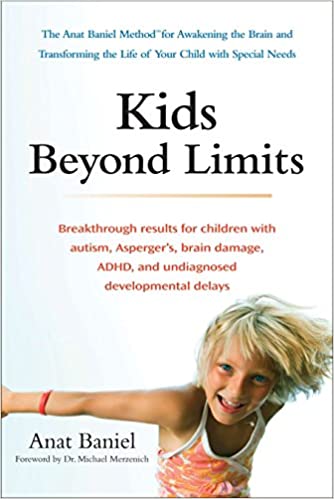
I met Feldenkrais and encountered him on a weekly basis since I was six years old or five years old because my father, a scientist, met Feldenkrais and was so impressed with what he was doing. Feldenkrais was experimenting with the movement lessons he was creating.
My father put together a small group of his researchers—10 of them or so. Once a week, Feldenkrais would drive to where we lived in Israel and would give this group a movement lesson. I was just hanging out because there was no babysitter or anything like that. I remember him from then.
It just happened, and then I started studying with the dance teachers that started with Feldenkrais. I started doing his work around the age of seven once a week. That just happened. Then, fast forward, I’m in university and I’m going to grad school. By that time, I realized that I want to work with people not solely through verbal interaction but also bring kinesthetic, movement, and the feeling of self. I was also very interested in the human brain, so I was taking courses in university and things like that that had to do with the brain and so on.
I was searching and searching, and then six months into my search, I recall what we call the lessons on the floor, the Feldenkrais movement lessons. I found him and then I started studying with him and that was that. The Anat Baniel NeuroMovement evolution from when I took his training, I traveled with him and helped him when he was much older. I became his protege basically and we became very, very close. We have a very amazing, unusual relationship of a very young person and a much older, remarkable guy.
As I was traveling with him, the little girl, Elizabeth, was diagnosed with global brain damage—she was 13 months old at the time—with an absolutely horrendous prognosis like she will never do anything and so on. I happened to be there. She happened to cry all the time. I happened to pick her up and she stopped crying. There were a few sequences of those.
Feldenkrais watched me with her, which I didn’t know, and he decided I should work with children. I was working a lot with dancers, musicians, and some athletes. I was both young and I was in that world of high performers. He started referring the kids that came to him to me and that became quite magical.
When I look backward, that’s what I was destined to do, but I couldn’t have known that ahead of time.
There were a ton of other synchronicities—what brought me to the states, the people I met. There’s just a sequence. It’s like when I look backward, that’s what I was destined to do, but I couldn’t have known that ahead of time.
The work with the children is what really challenged me and compelled me to understand what I do in terms of the brain. I knew I was impacting the brain, but when I started and I knew that, nobody talked about the brain. The term neuroplasticity did not really exist until the ’80s. That really started showing up in a much clearer way in the 2000s. It started showing in articles and this and that. I just knew that that’s what I was working with and then to understand in terms of quantum physics because the brain is an information system.
Here we are today talking, so it was just one continuous thing. I felt it, I knew. I just felt the whole thing. Feldenkrais was brilliant. He formed amazing things. He had an understanding that was easily 70–100 years ahead of his time. I could see it in him, and then I started feeling it in me that I am just going to do it. This is what I’m here to do.
That’s amazing. He is famous not just for some doctor. I’ve heard his name for maybe 20 years now.
He was really the first person that understood. He was a quantum physicist, a black belt in Judo, a mathematician, and just a darn amazing genius. One of the things that he did was his personal path because he developed his own. He was a soccer player. He injured his knee. There’s a whole kind of story, but the method evolved because he was trying to help himself both physically and emotionally. He took the quantum physics model and understood the brain in those terms.
Nobody had done it at that time at all and anything that people try to help themselves or others in terms of movement was done on a mechanical level—you stretch it, you pull it, and all that stuff. There was a complete sense of division between mind and body.
Today, it has come a long way but still, most of what people do is the relationship between mind and body, and the next step to do, there are relationships within the system. The whole reality is formed dynamically through the here-and-now relationships.
I don’t see a difference between someone’s emotional expression and motor expression.
If you think of movements like walking, what’s walking if you really look into it is the relationship between the parts—the ankles, knees, hips, shoulders, spine, every vertebra, neck, and eyes. In a dynamic, functional way, the relationships that the brain puts it into that makes it so that there is what we call walking. If you mess up the relationship with any second sufficiently, then walking will stop. The person will fall down, whatever.
It’s very hard to understand, but the reality is formed through the dynamic relationships of what we are generating at any given moment. That is what the brain is in charge of. When you really see it like that, I don’t see a difference between someone’s emotional expression versus their motor expression. It’s different aspects of the outcome of what the system is generating second by second. That level is not the same, just like not every movement is the same as every other movement. On the contrary, it’s highly differentiated, but it’s a manifestation of one system or a different manifestation. That’s very abstract and so on.
What happened when I started working with more and more of the kids because parents started bringing them to me is I continued working with musicians, with this and that. At a certain point, I asked, what about what I do works? That’s where I am today. Of course, it keeps evolving because once I defined my own essentials, I got a big jump in my own understanding of my own work. It was funny. I formed the distinctions and then the distinctions impacted me.
Very cool. I’m curious to hear what happened. What was it about what you were doing or what you were broadcasting? What was part of the field around you that when you picked up this child who was crying all the time, she stopped crying?
I would be lying or pretending to know that I know the answer. I can’t say I know that that’s it, but I can tell you what I felt. The situation was that a beautiful young couple in their 30s came in with a 13-month-old child that was diagnosed with global brain damage and we’re set to put her in an institution because she will never do anything. That was the context and the anxiety, depression, fear, and confusion that parents come in with that.
True intelligence is a brain that can figure things out, has the freedom to create, and be out of the box. Share on XI remember I opened the door for them. Feldenkrais and I were hosted on the Upper West Side of New York overlooking the park. He was in the background and I opened the door and let them in. The girl comes and the parents put her down on the ground. Feldenkrais calls them to come in and talk to him. They put the girl on the ground and I stayed with the girl to look after her. She started crying.
What I felt was the depths of her sorrow. It was just a very, very deep sense of sorrow, so I was compelled to pick her up. I connected with her. I held her and I didn’t see anything wrong with her. I knew that she couldn’t crawl. I knew that her eyes were crossed. I could feel that she was spastic, but nothing was wrong with her.
When I work with people and with children, it was always even easier, and then I learned to expand it. Nothing is wrong here. It’s just what it is. For me, when I picked her, there was nothing wrong with her. She was a very fully feeling and fully experiencing little body human being. I just held her and she just stopped crying. She used to cry a whole lot, but partly it was because she was in pain and people didn’t understand it.
They gave her the session and I was there with him. He saw what happened. He said, “Would you hold her for me while I work on her?” Because when a child cries, they can’t learn. Their brain is busy with something else.

I held her. The next day, they went to talk again. She cried, I picked her up, and she stopped crying. It happened twice. The third day, he asked me ahead of time, “Will you hold her during the lesson?” I said, “Sure. Of course,” the parents came in.
In that lesson, he started doing something, the whole movement. He did it with the head and I did it with the pelvis. We coordinated the through her body. That was the first time that she could hold her back erect and keep her head up.
He worked with her son after, but he got older. I worked with her for 20 years all the way to her finishing high school, walking, talking, and getting two master’s degrees in two different universities, getting married, and running a small business. That’s the girl that was supposed to do nothing. She was, in many ways, my Ph.D., postgraduate studies, and so on about what’s possible. That’s where I live. I don’t know for sure what’s possible, but I had a sense of possibility, a sense of openness, and connecting with people where they are.
Amazing. Miracles are real. I’m sure that that was meant to be. It feels like it was part of a soul contract that you had with Dr. Feldenkrais and a soul contract you had with this little girl that became an accomplished woman. There are (I’m sure) plenty of soul contracts that you have with other people as well, but that just strikes me as something that seems to have happened. Do you know about the concept of a soul contract?
Miracles are happening daily.
Yeah, of course. We’re talking a lot about Moshe Feldenkrais. I call him by his first name, but a few things. First of all, I just worked with four children yesterday. When we’re done here, I’m going to go back to our center here in Northern California and see three other kids. Of course, now, I’ve trained a few 100 people. It’s close to 1000 practitioners. In our center, we are five practitioners that work as a team and the miracles are happening on a daily basis.
The reason I said this is because when something happens on a daily basis, people tend to not think of it as a miracle anymore. However, for me, I experienced this as miraculous. Even though I have an explanation, I have a theory, I have the whole thing, it’s predictable in many ways, and so on, the fact that it happens is a miracle again and again and again. In a sense, the sense of miraculousness just grows more and more.
However, within the miraculous, there is an accountability and responsibility to operate in certain ways and to act in ways that usher in what we call miracles because the fact that there is life by itself is like, what the hell? It’s weird. If you really allow yourself to feel it all the way through, but now that I am in it, you’re in it, and so on, there is accountability.
The practitioners that I trained just do miraculously. We just got a new family. They have a child, of course. We bring them into the whole stuff talk of the missions. They live in Germany. They flew in from Germany to see us. They did one kind of physical therapy, another kind, and so on.
The work with the children really challenged me and compelled me to understand what I do in terms of the brain. Share on XThe physical therapists are really wonderful people. It’s just a question of what training they got and what tools they use. They tend to be very much in the old models, the mechanical attempts by force and reputation rather than collaboration between the two brains. I’m the grown-up, I’m the one that got educated, and I’m the one that has more options, so I’m the leader in the dance.
However, if the child’s brain is not with me and doing its own changing, nothing good will happen. People say, I got the child to walk. I can get the child to walk. I can get anybody to do anything, but I can interact with the child in the way that they figure it out and they get to doing it.
The parents started working with somebody who would train the kids in Europe and changed immediately. They flew here. The girl still has limitations, but she’s just delightful, happy, and active. She’s just a four-year-old. It’s just like a bubble of life, so it’s really wonderful.
It’s always just another opportunity to recreate this reality and create something out of nothing.
The soul contract, every time we work with a child, that’s just like with Elizabeth. It’s always just another opportunity to recreate this reality and create something out of nothing. That’s really what we do. Learning is this magical thing where it’s not there, then ta da da da da occurs, and then all of sudden, the child can say ‘mama’ for the first time. You can figure out how to do something you couldn’t do before. This is wild. When we think about learning, it’s amazing.
Turning thoughts into things.
Yes. And so much of the things we do are not really there until we do them, and then they’re not there until we do them again. It’s like music. The song, we remember it and we feel like it exists, but it only exists when it is either heard internally, sung, or opened in your iTunes or something.
That’s a way of relating to reality that can feel very uncomfortable in the beginning because it’s a sense of loss of control. Does it make sense? When we’re in the mechanical reality, which is also an important part of the reality, but you put one block on top of the other, you do enough of them, and then you have a house. Then, you can touch the house, you can knock on it, make a sound, and smell the smell of the wooden floors. You’ll have ongoing experience with these things that you can touch, move, and manipulate.
But when it comes to an adult, a musician, or whoever is learning to do something they can’t, it feels elusive. People try to make you do it, but when we dance with ourselves or with each other in a way that activates and awakens the inner processes in the other person to create what’s not there yet, that’s when magic just happens and happens.
You have small children, right?
I have a two-year-old, yes.
Did you teach this thing to an amazing little two-year-old to actually roll over? Maybe you were told to do tummy time, which I have said not to do, but to actually learn to move from the back to the belly, you did not teach the child to do that. You did not teach them to look at a toy and crawl over it. You did not teach them to want to be in your arms. You did not teach them any of it, but first of all, if nobody was there, they wouldn’t survive.
If you just put them and neglected them, a lot of what they learned, they would have never developed. You are essential in them doing what they’re doing internally. That’s why it’s so important to evolve, look, and apply this way of being to everything we do, especially with each other.
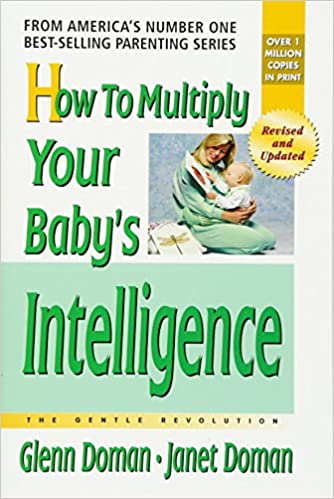
One thing I learned is last year, I took a 40-hour course on How To Multiply Your Baby’s Intelligence. It was taught by The Institutes for the Achievement of Human Potential. That was amazing synchronicity that we were gifted this amazing course and first of all, found out that it even existed. Janet Doman ended up being a guest on my podcast talking about some of the things that she and her staff had taught in that 40-hour course.
One thing that came to mind while you were talking about rolling and crawling, you don’t teach the baby these things, but you can prevent them from thriving by not being around. Swaddling was something that Janet was like, this is a bad idea because it stymies their ability to move. When you delay their crawling by going for the swaddle the whole time because you don’t want them to wake up, do the startle reflex, and then you won’t get your nap in or whatever, that’s not the way to be.
She showed a padded ramp that you put downhill. She put a (maybe) three-week-old or four-week-old baby on it without any kind of clothes, just the diaper. He or she, with enough practice of enough times on this ramp, will start to crawl. I’ve seen videos of three-week-old infants crawling on these ramps, and then their brain goes into hypergrowth and hyper learning mode because when a baby is crawling, then the dangers multiply. You stimulate their learning by getting them on this ramp.
That was just one out of a bazillion different things I learned from that 40-hour course in How To Multiply Your Baby’s Intelligence. I’m curious to hear what your thoughts are on that.
Are you okay with me telling you what I really think about that?
Of course. If you have a differing opinion about it, I want to hear it and I want our listener to hear it too.
I won’t start there, but it was based on Temple Fay, a neurologist that had some very important insights. Piaget did it with cognitive level. I forgot another French guy that realized the realization that a roughly identifiable progression in the so-called stages of development was a pretty novel thing.
Grandmothers and mothers knew that children first do this, then do that, but it wasn’t like a concept that was built into the system to do it that way, and then it flipped a bit and said, oh, if the child does not do it, maybe something is wrong. Of course, this can be an identifier of a problem. There’s no question about it. You don’t have a child lying in bed doing nothing for 15 years and then waking up one day, getting up, and walking. There is a process that has to happen. Let’s park that for a moment on the side.
Human development in terms of maturation and independence where you can take care of your life is the slowest in the animal world. You have a cow birthing a calf. She licks the newborn and maybe some other animals from the herd do too. Within 15–30 seconds, that little thing is very wobbly, but it starts coming up on the street. Imagine your newborn within 30 seconds starting to roll over, start crawling, and going toward your wife to nurse. That’s unthinkable.

You look at humans. We’re really, really slow. Even when the baby starts walking, saying a few words, and so on, it’s still completely dependent. In terms of maturation, you reach maturation really, really slow. If we look at the closest evolutionary cousins we have, we look at apes. Apes take a while.
I have it in my book, Kids Beyond Limits. When you compare the speed at which the self-independence maturation is there, humans are really, really retarded in their development—retarded meaning slowed down—but then when we look at it closer and give it a closer look, we say, what on earth is going on? Is there an advantage to developing slower? What is the advantage that a baby lies on its back and does those random and reflex movements?
I don’t know if it’s the Doman-Delacato people that said it, but they call them purposeless, useless movements because they already look at something that’s formed. If starting to cross sooner and starting to do certain things sooner was advantageous, then monkeys should be inhabiting Harvard and the ones flying to the moon. But it’s humans that inhabit Harvard, build machines and cars, talk, have mathematics, and do professional dancing, theater, and Shakespeare. I’m taking my time here because it’s important. Emotionally, the thing is again, it’s a mechanical thing, faster better, sooner better, stronger better.
There’s a book, hopefully, I’ll retrieve his name. I always forget his name. I have it somewhere here in my library, but I didn’t expect to need it. A famous biologist. To our advantage, this slowing down of development, there’s a gene in us that does that because the slowing down allows for greater differentiation—that means many more connections in the brain and much more complexity—the ability to do things without sufficient differentiation is impossible.
When I get a child that had an in-utero stroke and they can’t use part of their body, I don’t try to make them move this spastic arm or something like that. I work with them so that the differentiation in their own brain gets to a point where it allows for the discovery of how to control this thing and how to do the complexity.
I don’t think there’s any advantage for a baby to start crawling sooner.
I don’t think there’s any advantage for a baby to start crawling sooner. I think there’s an advantage to giving the baby an environment that allows them to spontaneously have variability and freedom of movement.
When my daughter was born and she was premature when she was little, I took her diapers for periods of time so she will have the freedom to do those useless movements because movement forms the brain. It’s through movement that the brain literally grows. I totally agree to not swaddle the children unless the child is really so agitated. You swaddle it for 30 or 20 minutes to give you the experience of calming down.
It becomes a variation. That’s one of my essentials. But swaddling as a way to stop the child from being agitated or upset is ridiculous because the system needs to learn how to self-regulate itself, so I would work on that. We need to do it with a lot of children on the autism spectrum. But to try to accelerate that which is built to take its own course, the brain is so potent, it’s so powerful that healthy children, you can stop them from moving almost altogether by just putting them standing and see if they can hold it.
If they’re not, you pick them up and carry them in the back. You put them standing, and by the time they’ll be 13 months, 14 months, they probably will be able to do it. I don’t know if it was Margaret Mead, the famous anthropologist. There was a tribe that believed that if you let your babies crawl, they’ll become like animals, not humans, so they carried them on their backs until they could hold themselves.
The brain is so capable it would learn to do it. It will accommodate what you give it up to a point, but I don’t think it’s good to accelerate development because of the underlying richness.
There was another thing during World War II. There was a whole natural experiment for children that were accelerated versus children that weren’t. The children that weren’t accelerated reached the milestones a little later, but when they were seven years old, eight years old, and nine years old, they had much more skillful motor activities and they were doing better actually cognitively. That’s the whole point. We want it to have a richness of experiences from which they form themselves to the next level.
Reality is formed through the dynamic relationships of what we are generating at any given moment. That is what the brain is in charge of. Share on XWhen I work with children that come to me that can do something, I don’t try to make them do it. I say, if he could, he would; if she could, she would. Let’s do things that create the areas where the brain doesn’t have sufficient mapping. The relationships between the parts of the body that dynamic relationships are not rich enough, I work on that, and then they put it together spontaneously. Nature in my world built it to be this way.
I know you’re very excited about it. Yes, you put the little baby and they can feel it, but the three weeks old, what are they even doing trying to crawl? It’s part of the why and what for? I can’t tell you what for, but I can tell you the only reason to do it is to get the parents to feel happy and more safe that their child is going in the right direction. That’s where I work with the parents because I talk about a spiritual place. I talk about not neglecting the child or saying, oh, well, whatever happens but learning to take delight and the joy in the process of the growth of the child, not the outcomes.
I did not do the baby ramp thing with our two-year-old. We didn’t discover the IAHP Doman Method for the first year. It’s about a year ago when our little one was 1 ½ years. We didn’t apply everything, we didn’t teach him math, and we didn’t teach him how to read. I learned some of how to do that. We did get the dot cards so we could show him, that there are 70 dots on this card and then there are 69 dots on this other card.
‘I have a degree in statistics. I grew up with brilliant mathematicians.’ Of course, the brain is such a sponge, a healthy brain that’s not traumatized. It’s like, okay, let me make sense of that. We need to take anything. It’ll go any direction. You put in a newborn in Israel, they’ll speak Hebrew. You put a newborn in the United States, they’d speak English. That’s okay because they’re going to learn a language, but it just shows it’ll go the path you give it. Where do we come from? You do forward black and white background, the brain has no choice because of the contrast. It’s the contrast that gets attention.
The whole thing that this information system is built on is the perception of differences.
The whole thing that this information system is built on is the perception of differences. You create extreme differences visually and you “force” the system to go there. I want a system that when you’re really visually skillful, you can see very fine differences. What’s the point? The learning, the mathematics, and the concept of numbers are brought. Even dogs and other animals have a sense of quantities of less and more. They don’t bring it all to mathematics.
There are so many ways in life that the child can experience the differences. The richness is where they grow and then they follow their inclination. You allow that roundness from which they will form their inclination in their own lives. It’s a very different approach.
I want to say something about it which is, for me, very exciting. The pandemic happened. It was identified in March of 2020. April came, I totally bought into what the scientists said, I looked at it, and I thought, this is going to take a while. Children are growing anyway. Children with special needs, their freedom, that’s what they thought. The variability to grow is cut to some extent, sometimes to a great extent. They don’t have the input from their own movements to do this growth, but the brain does form itself. It does mature. It’s just a question of what will it mature into.
I thought, okay, we’ve got to get these kids having access to experiences that will create more neural networks, more connections, and all this stuff in the brain, but we weren’t able to see them in person, which was the first time in my whole career. I can’t get the parents to become practitioners on the spot, it takes a full training program. But they’re essentials, the way to do it, how you change the diapers, and how you feed.
It’s not trying to get the baby to accelerate their development but to actually get the parent to create conditions that facilitate the brain to do its job better whatever it’s doing now and whatever it’s growing around now.
Once we started doing it, we started coaching the parents. We will show them how to just narrate to the child what they were doing, simple stuff, a lot of backing them off, and allowing the child to do and feel what’s going on. We’re working with the parents. In one session, a child who started but never could go downstairs started going downstairs. Those environments allow their brain to figure something out.
As we were doing the coaching, I realized that the biggest challenge is that everybody’s trying to fix the child.
As we were doing the coaching, I realized that the biggest challenge is that everybody’s trying to fix the child. The thing we need to do is connect with a child. That’s what I told you about Elizabeth. I created a new online course for parents that I call From Fixing to Connecting. It’s a wonderful course where I take them step-by-step for 10 weeks using the essentials.
Then, they go and start practicing. What they do is when they look to practice the essentials, because each essential drives connection with a child but also creates stuff in terms of richness where things can happen, the parents confront how challenging it is for them to connect with their child—especially with a child with special needs—rather than seeing the child as a project they have to fix. The miracles start happening—they can’t be a practitioner, but in the home life. Now, when we get new families coming in, I can tell the difference right there and then within seconds in the room whether the parent has done the course or not.
There is this fabulous direct brain research. One of the scientists doing it is Elizabeth Torres out of Rutgers University. She can show how what happens in the brain of the adult impacts the brain of the child. I have known that for years. I have the first chapter in my book about Elizabeth. I was going to start talking about the brain and the essentials and I couldn’t do it because I thought, before anything, I wrote a chapter From Fixing to Connecting. It’s a whole different way of doing it. We become one system.
Do you know what? People are built to connect and become one system while they’re connected.
Like quantum entanglement.
Exactly. I used a video of a mama dolphin and a baby dolphin. The baby dolphin is still little, sometimes a little badly. They swim. There has to be an adult dolphin swimming with the baby dolphin for the first three months nonstop. Nobody teaches the baby dolphin to swim, but they have to swim. If the adult is removed for any reason, the baby dolphin will sink and die.
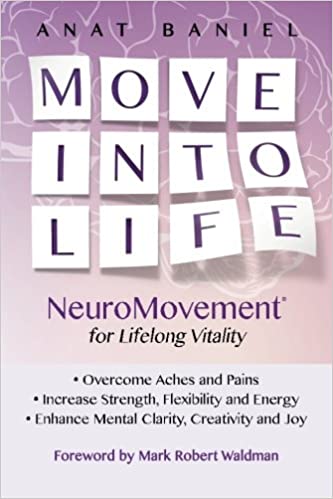
What is happening? The mama dolphin creates a current in the water. The baby dolphin is carried by the current. It looks like they can swim independently, but they can’t. That’s what my approach, which I call Fixing to Connecting with the nine essentials—the NeuroMovement—is all about.
I use myself to meet the person or the baby dolphin where they’re at and start swimming. That means using movement and sometimes talking in a song conceptual stuff, but swimming near where they’re functionally and doing little variations.
Their brains start creating new connections. The speed at which they estimate the connections happen when this learning happens is 1.8 million new connections per second. When you force somebody to do something over and over again or if they do it automatically, undetectable new connections. That’s what all therapists do.
Any human being that helps another human being go through some change—and I’m talking right now about positive change—is through connecting and doing something that allows the person to differentiate around the edges. That means I cannot hop from here—if you told me, okay, just speak Chinese, I can’t.
I had this experience just yesterday. I thought about it. We’re getting more and more people coming here from Turkey to get sessions, so I hear a lot of Turkish. Turkish is so different from Hebrew, even though the countries are close, to English. When I heard it in the beginning, it had no differentiation for me. It was so unfamiliar.
Now, I have this Turkish happening, and this week I have a lot of Turkish. Yesterday, I was working and the mother was talking to the child. The child was talking back to the mom in Turkish. As I was working with the child, I could start getting distinctions of where a sentence begins and where a sentence ends. I could feel it. If I stayed in this for two or three months with some also specific words, I would learn Turkish, I can learn Turkish. This is what’s so important.
In the other interview you did with me in the podcast, I think I talked about the essentials, but each and every one of those essentials is what the biological system creates spontaneously. I didn’t invent the essentials, I identified them. I hope it’s not too hard for you to hear my feelings about the Doman-Delacato thing.
I didn’t invent the essentials, I identified them.
No. It’s all meant to be. It’s all unfolding the way it’s supposed to. I feel actually relieved that I didn’t do the whole curriculum for our little one, teaching him math and encyclopedic knowledge. I did buy a big pack of 700 different bits of intelligence and we occasionally go through them, but I’m just not drawn to do that every day. I’m not drawn to teaching him how to read in the Doman style.
I felt bad that I got this incredible gift, this 40-hour course, and learned all these great things. Some things just really resonated for me and stuck like don’t try to test your child all the time.
Don’t test your child at all because who are we testing the child for? I don’t want them to feel guilty, sense of loss, or all that stuff which tends to come up, but who am I doing this for? Who am I putting a three-week-old on an inclined padded board for? It’s not real crawling. It’s just movements that start propelling them forward. Who am I doing this for?
You’re not doing it for the baby. I promise you, the baby doesn’t ask for it. You’re doing it for you. What is it that you want? What is it that you need? You are ambitious. You want your child to be a professor in the university. You want them to go to the Olympics. What are your dreams for your child? Great. Keep those dreams, but own them and don’t put them on your kid.
That’s why the evolution is in the parent, this fixing to connecting. I tell the parents when they sign up, the good news is that this course is about you. The bad news is that this course is about you. You are going to grow, you are going to evolve, and you’re going to become more benevolent. You’re going to enhance your awareness and your ability to see the bigger picture because this picture is a small tunnel.
Keep those dreams, but own them and don’t put them on your kid.
We’re going to teach them math. Have they done research that showed whether kids who have done it are better at math? What other consequences might be? In Israel, we used to have open schools for children where they just let the children grow like wild animals. Not a good idea. Many of them got out of it very disturbed. It wasn’t a good experiment. But to use our knowledge and our awareness of self, who are you crawling your kid for eight hours a day for a child that can’t crawl and you do it another day and another day?
I was in China. They brought me to try and teach caregivers in orphanages how to use our work with the children. They were very proud. They went to Hong Kong, a good bunch of PTs learned how to be PTs, and they came back. I couldn’t believe my eyes. The woman who brought me to see it knew my work. She was herself a PT that was in charge of the whole orphanage program. Anyway, she said the mat is going to upset you, but I think you’re going to have to look at it.
I’ve never seen anything like that before. They had two rows of children. I think there were maybe 8 or 10 kids in a room on a mat. All of them lying on their back, all of them about the same age, all of them lying like this. This is a reflex thing. They were past the age of that reflex, but they were in this reflex pose. The therapists were just doing whatever they were doing. The kids were just lying there and they all looked the same.
I don’t even know how they succeeded to do that, but that must have been driven so forcefully that the children surrendered. Their brains just give up. Talk about me getting upset, there was nothing I could do about it.
Then, I went down and they brought to me a four or five Chinese boy. The women who took care of those kids were actually women, usually in the 50s and 60s. They go into retirement really early. In China, they retire these women way before they need to retire. Then, these women were recruited into those orphanages to just take care of these kids. It was beautiful. That was a beautiful part.
Again, I got this child that I didn’t expect to be connected to. I had this also in Morocco. I started doing what I do, and I started dancing with a kid where he was. He changed at a speed that you can’t even imagine in just one demonstration. They were totally moved. It was a very short time to transform something there.
I don't know for sure what's possible, but I had a sense of possibility, a sense of openness, and connecting with people where they are. Share on X
In Morocco, they brought me also. The head PT was proud of it, but also, very forceful and repetitive. The people who were doing it were so loving. The culture is so loving. I said to them, what do you want to get? They said, the kids cry a lot. We would like the kids to not cry so much. I said to them, the good news is when the child is still crying—the Chinese kids are not crying anymore, that means there’s enough vitality and health there to work with, but you have to pay attention to it. It’s communication.
They brought me a child that they found that somehow survived on the streets. There are mothers that have children out of wedlock. It’s dangerous for them, so they find a way to sometimes just leave the kids in the streets. The princess started a program to get those mothers to bring them somewhere so they wouldn’t.
Anyway, this kid, every time they brought him into a room, he started screaming. When they took him outside, he calmed down. They brought him in for me to work with him. Actually, Dr. Michael Merzenich—I did this trip with the father of neuroplasticity—was there. He watched the lesson.
At first, the kid was wild and out of control. I don’t know how he survived, but do you know what it meant to me that he survived? That he has such a fabulous, powerful brain. He had to be a genius to survive, but he didn’t look like a genius.
I’m giving you an example that’s the opposite of what you told me about Doman. We have it on video. Within 15–20 minutes, this kid all of a sudden realized that something was different and it didn’t have to be in crazed survival mode. I didn’t know what would happen. I’ve never tried it to work, but I could see his genius.
I could see what his brain made out of what he experienced because we learn from our experience, we sort out the world, and we form the universe based on our experience. What kind of universe does a three-week-old create when he’s exercised to crawl when he’s supposed to start crawling more around the age between 6–9 months? How are we impacting his brain? What are you doing this for? Did anybody crawl, Einstein, Beethoven, Mozart, whoever else that we know that is an amazing person or great poet? Did they crawl? Just think for a moment and feel.
That’s the connection. How does it feel when you close your eyes and imagine yourself being three weeks old and putting on this thing? Thanks for opening for me this opportunity. I don’t know who will ever listen to all this thing that I just talked about, but I think it’s really important.
It is important. It’s very important. This ties into the whole intuition of quieting your mind and getting out of your monkey mind out of your head and into your heart. When you’re in that place, does that feel right to keep quizzing your kid, your little baby, what color is that or trying to get them to crawl at three weeks old? Intuition is teaching from within. That teaching from within is going to tell you in your heart, this doesn’t feel right. If it’s not right, you’re going to feel that.
Intuition sometimes is too vague.
But I want to take it because intuition sometimes is too vague. When I talked about miracles, accountability, and responsibility—the relationship between the two—I think the thing to ask is who am I doing this for? What is this action? Before you do it, you say, what is driving me to do that? What am I trying to accomplish?
One of the craziest things they do with kids that have a hard time doing math and stuff like that, first of all, they keep asking them the same thing. I’ve had kids that have real issues, one child due to fragile X-chromosome disorder. They have real issues.
When I started with this boy when he was three years old, he couldn’t really stand up and walk. He couldn’t talk, he had zero attention span and everything. Talk about hyperactive. His brain was so at a loss of organizing itself into an intention and into organized action.
Anyway, fast forward, he’s seven years old. They were starting to teach him. They put him in a school for children with special needs, but he’s walking, talking, and starting to have abstract thinking, which he didn’t have at all. He started having that. He can’t figure out math. They keep showing him this sign plus another sign plus the same sign and say, how much is it? They call it one plus one is two.
Then, a few things happen, but one thing that I want to mention is as I’m doing it, I see that he has no idea. I didn’t know how to do it, but I was confronted with a child that obviously has some intelligence but was extremely challenged with abstract thinking. Numbers are completely abstract thinking and people just barrage him for hours again and again.
Let’s just call him John. I stopped everything. I also do the movement to calibrate the brain and to upgrade the quality with which the brain works. I did some movements before, I set him up, and I said, “What do you think numbers are for? Why are we doing this?” I just made it up because I go, what are they wanting from this kid?
I have a degree in statistics. I was good, obviously, in mathematics, but I never thought about what numbers are for. I had to go there. I said, “What are numbers for?” He looks at me and says, “I don’t know, I’m stupid.” His intelligence got him to figure out what was going on. He’s stupid. I said, “No, you’re not stupid. It’s the people that try to teach you to do math that are stupid, honey.”

I had to liberate him. Of course, we had to change that belief immediately. I said, what are numbers for? I took examples about if he has the two toys. He had those figures from some kind of game or something. I don’t remember what it was, but he had four or five of those characters. He had an older sister. That’s the point I want to make. It doesn’t matter.
As we were working, I started giving him different options and variations. I created those big differences like do you think if I take one of these and one of these, it’s a million? Everybody knows that a million is a big number. Everybody knows that one is a small number. I didn’t care about the math.
By the way, I tell the kids, don’t worry about giving me the correct answer because I already know what it is. I know the answer. I take it exactly the other way, the freedom. I said, “Don’t worry about me. I know the answer.” I did a huge amount of variability, but when I asked him a question, I realized he’s guessing. He learned to guess. If you ask the kid how much is one plus one and they say five, we say no. How much is one plus one? That’s the second time. But the fifth time, they say the right number. They say two. You think, oh, great, they figured it out. No, they guessed it.
Do you know what’s the next thing that I did with him? I said to him, “Do you know what guessing is?” He said, no. I took him through a whole story where he gets something versus he knows something. I said, that’s guessing, that’s knowing. This is my approach to learning math.
Amazing. You said you have some of these different breakthroughs and stuff with these kids on video.
I have thousands of hours by now.
Anything public on YouTube that we can maybe include some video embeds on this episode show notes?
That one was quite a few years ago and it wasn’t videotaped, but we have tons. We have edited videos and we’ve made a voiceover that I’ve been using in presentations at conferences and stuff. If you don’t mind emailing, we will give you one with an autistic child who couldn’t figure out how to read and write, and what they do with him. Within one session, he figures out how to identify the letters and put them within the lines. He was already 10 years old and he couldn’t do it. Of course, I did a lot of other things with him and his brain got to work better and better before we did that.
I don't know for sure what's possible, but I had a sense of possibility, a sense of openness, and connecting with people where they are. Share on XWe can select one with a child with cerebral palsy. We show the progression of that child that had a horrible prognosis. We can give you three different diagnoses, but the thing that would be very important to say there is to say that even though this is done with children with special needs, this is the same way in principles by which the brain works with healthy children.
Let me tell you one thing. We’re working with a child from Canada that’s now about 3 ½ years old. We’ll tap as we work with the kids with special needs. They have siblings about the same age, a year or two older or younger, but especially, it’s more clear when the siblings are older. The child that was behind and challenged becomes more intelligent than the siblings because their brain evolves to be a better, stronger brain.
That’s a quote from Merzenich about my work. He said that using the essentials of this work help create a stronger, better brain. A better brain can sort and learn anything better. Maybe you want to put the story in relation to what I just said now.
When Elizabeth that we talked about earlier was maybe 16 years old, a teenager but still in high school, her brother was older, beautiful, just a wonderful, young man, and very loving with her. They lived in Chicago and I taught a weekend workshop in Chicago. He came to the workshop and he had huge intensity and asked to have lunch with me. Usually, I like to just take a break when I teach, but I said, okay, and I had lunch with him.
We talked a little and then I said, “Why did you want to have lunch with me?” He said, “Because Elizabeth is a lot more intelligent than I am.” She knows it was hard to learn a lot better than me. I know it’s your work. What can I do to learn like Elizabeth does? She’s more intelligent than me. It wasn’t easy for him because intelligence is not how many dots you identify. True intelligence is a brain that can figure things out, has the freedom to create, and be out of the box. That brain can also learn mathematics. This is my credo.
That’s great. That is very profound. You’ve changed a lot of people’s lives.
For folks who want to learn more from you and your methods and want to take maybe the course on not fixing your child but connecting with them and the NeuroMovement, all that fantastic stuff.
Yeah, and maybe for people who want to become practitioners because it’s a magnificent journey. You can use it in any way you want.
Where should they go?
We will give a link to the newsletter because we are actually writing articles each month on a topic. We started just at the beginning of the year, but the last two, I’m very happy with. Let’s put it this way. There’s the newsletter and there’s a website, anatbanielmethod.com. In the newsletter each month, we give a free movement lesson. We’ll give a link to a lesson that people can adopt for themselves. Anybody who’s interested in the training can go to the website, anatbanieltraining.com. I have my two books, Kids Beyond Limits and Move Into Life.
I am starting to do what I call Town Hall once a month where it’s half an hour. It starts 10 minutes with a movement lesson—the Town Hall focuses on something—and then 20 minutes of Q&A live.
Awesome. That sounds great. Thank you for all your wisdom and insights. I do appreciate you pushing back on some of these things that I shared, learnings that I had gotten from interviewing Janet Doman from the course. That’s really helpful to hear another opinion and what you said made so much sense. Thank you so much.
Again, listeners, anatbanielmethod.com is a great resource. Go check out the stuff there and the training, and hopefully maybe even become a practitioner. We’ll catch you in the next episode. I’m your host, Stephan Spencer, signing off.
